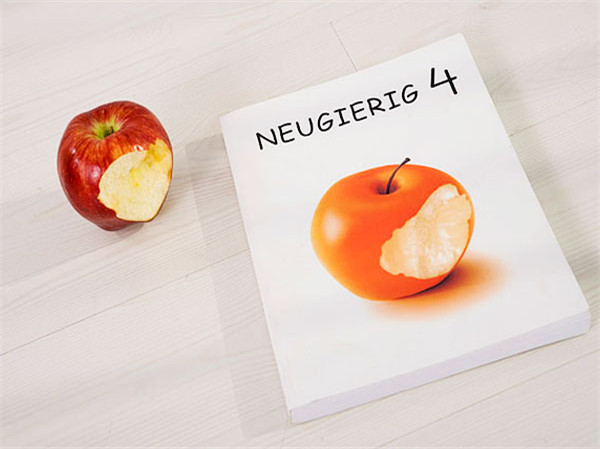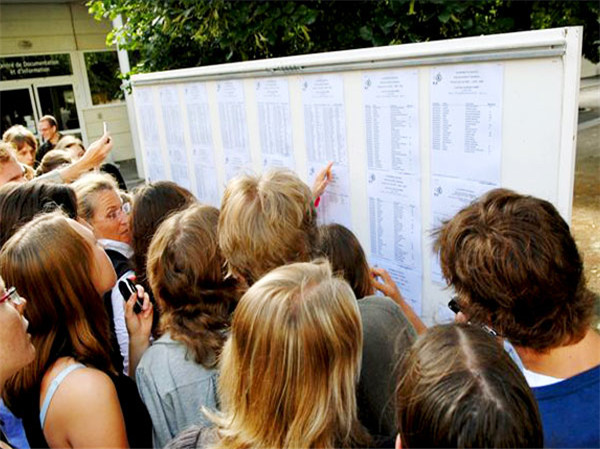现在大家在进行托福备考时官方真题Official托福模考软件相信是大家用的最多的工具了,对于托福成绩的提升是非常有帮助的。托福听力可以说是整个托福考试当中比较重要的一个部分,如何利用现有资料官方真题Official模考软件来提升大家的托福成绩呢?今天小编在这里整理了官方真题Official9托福听力Lecture2文本+题目+答案解析来分享给大家,希望对大家托福听力备考有帮助。

官方真题Official9托福听力Lecture2原文文本
Narrator: Listen to part of a lecture in an environmental science class.
Lecturer: So since we're on the topic of global climate change and its effects, in Alaska, in the northern Arctic part of Alaska, over the last ... oh... thirty years or so, temperatures have increased about half a degree Celsius per decade, and scientists have noticed that there’s been a change in surface vegetation during this time. Shrubs are increasing in the "tundra". Tundra is flat land with very little vegetation.
Just a few species of plants grow there because the temperature is very cold, and there's not much precipitation. And because of the cold temperatures, the tundra has two layers: top layer, which is called the active layer, is frozen in the winter and spring, but thaws in the summer. Beneath this active layer is a second layer called "permafrost", which is frozen all year around, and is impermeable to water.
Female Stu: So because of the permafrost, none of the plants that grow there can have deep roots, can they?
Lecturer: No, and that's one of the reasons that shrubs survive in the Arctic. Shrubs are little bushes. They're not tall and being low to the ground protects them from the cold and wind. And their roots don't grow very deep, so the permafrost doesn't interfere with their growth. OK? Now since the temperatures have been increasing in Arctic Alaska, the growth of shrubs has increased. And this has presented climate scientists with a puzzle...
Male Stu: I'm sorry, when you say the growth of shrubs has increased, do you mean that the shrubs are bigger, or that there are more shrubs?
Lecturer: Good question! And the answer is both. The size of the shrubs has increased and shrubcover has spread to what was previously shrub-free tundra. Ok, so what's the puzzle? Warmer temperatures should lead to increased vegetation growth, right? Well, the connection is not so simple.
The temperature increase has occurred during the winter and spring, not during the summer. But the increase in shrubs has occurred in the summer. So how can increase temperatures in the winter and spring result in increased shrub growth in the summer? Well, it may be biological processes that occur in the soil in the winter, that cause increased shrub growth in the summer, and here's how: there are "microbes", microscopic organisms that live in the soil.
These microbes enable the soil to have more nitrogen, which plants need to live and they remain quite active during the winter. There're two reasons for this: first, they live in the active layer, which, remember, contains water that doesn't penetrate the permafrost.
Second, most of the precipitation in the Arctic is in the form of snow. And the snow, which blankets the ground in the winter, actually has an insulating effect on the soil beneath it. And it allows the temperature of the soil to remain warm enough for microbes to remain active. So there's been increased nutrient production in the winter. And that's what's responsible for the growth of shrubs in the summer and their spread to new areas of the tundra. Areas with more new nutrients are the areas with the largest increase in shrubs.
Female Stu: But, what about run-off in the spring, when the snow finally melts? Won't the nutrients get washed away? Spring thaw always washes away soil, doesn't it?
Lecturer: Well, much of the soil is usually still frozen during peak run-off. And the nutrients are deep down in the active layer anyway, not high up near the surface, which is the part of the active layer most affected by run-off. But as I was about to say, there's more to the story. The tundra is windy, and the snow is blown across the tundra, it's caught by shrubs. And deep snow drifts often form around shrubs.
And we've already mentioned the insulating effect of snow. So that extra warmth means even more microbial activity, which means even more food for the shrubs, which means even more shrubs and more snow around etc.. It's a circle, a loop. And because of this loop, which is promoted by warmer temperatures in winter and spring, well, it looks like the tundra may be turning into shrub land.
Female Stu: But will it be long-term? I mean maybe the shrubs will be abundant for a few years, and then it'll change back to tundra.
Lecturer: Well, shrub expansion has occurred in other environments, like semiarid grassland, and tall grass prairies. And shrub expansion in these environments does seem to persist, almost to the point of causing a shift. Once is established, shrub land thrives, particularly in the Arctic, because Arctic shrubs are good at taking advantage of increased nutrients in the soil, better than other Arctic plants.
查看官方真题Official9托福听力Lecture2的题目请进入下一页→→→
相关推荐
-
【官方真题Official托福阅读】官方真题Official3托福阅读词汇真题练习——pales&significance
2015-11-19![【官方真题Official托福阅读】官方真题Official3托福阅读词汇真题练习——pales&significance]()
-
【托福听力备考】官方真题Official听力高频词汇——文学讲座学科词汇汇总
2015-11-06![【托福听力备考】官方真题Official听力高频词汇——文学讲座学科词汇汇总]()
-
托福到底能考多少分?19年必练真题告诉你答案
APP专享![托福到底能考多少分?19年必练真题告诉你答案]()
-
【官方真题Official托福阅读】官方真题Official3托福阅读词汇真题练习——ensuing&initial
2015-11-19![【官方真题Official托福阅读】官方真题Official3托福阅读词汇真题练习——ensuing&initial]()
-
【官方真题Official托福阅读】官方真题Official3托福阅读词汇真题练习——guarantee&ensure
2015-11-19![【官方真题Official托福阅读】官方真题Official3托福阅读词汇真题练习——guarantee&ensure]()
-
【官方真题Official托福阅读】官方真题Official3托福阅读词汇真题练习——arduous&difficult
2015-11-19![【官方真题Official托福阅读】官方真题Official3托福阅读词汇真题练习——arduous&difficult]()
-
【官方真题Official托福模考】官方真题Official4托福阅读词汇真题练习 adjacent&nearby
2015-12-04![【官方真题Official托福模考】官方真题Official4托福阅读词汇真题练习 adjacent&nearby]()
-
官方真题Official4托福阅读词汇真题练习——rebound&decline
2015-12-04![官方真题Official4托福阅读词汇真题练习——rebound&decline]()
-
【托福阅读备考】官方真题Official1托福阅读词汇真题练习——plugged&washed
2015-11-09![【托福阅读备考】官方真题Official1托福阅读词汇真题练习——plugged&washed]()
-
官方真题Official5托福阅读词汇真题练习——promote&complicate
2015-12-09![官方真题Official5托福阅读词汇真题练习——promote&complicate]()
-
【官方真题Official托福阅读】官方真题Official3托福阅读词汇真题练习——devised&suggested
2015-11-19![【官方真题Official托福阅读】官方真题Official3托福阅读词汇真题练习——devised&suggested]()
-
【官方真题Official托福阅读】官方真题Official3托福阅读词汇真题练习——particular&final
2015-11-19![【官方真题Official托福阅读】官方真题Official3托福阅读词汇真题练习——particular&final]()
-
【官方真题Official托福阅读】官方真题Official3托福阅读词汇真题练习——integral&variable
2015-11-19![【官方真题Official托福阅读】官方真题Official3托福阅读词汇真题练习——integral&variable]()
-
官方真题Official8托福阅读词汇真题练习——disruption&exhaustion
2015-12-18![官方真题Official8托福阅读词汇真题练习——disruption&exhaustion]()
-
【托福阅读备考】官方真题Official1托福阅读词汇真题练习——autonomous&artistic
2015-11-09![【托福阅读备考】官方真题Official1托福阅读词汇真题练习——autonomous&artistic]()
-
【小站推荐】官方原题Official模考软件之考托模考测试题C1
2014-05-04![【小站推荐】官方原题Official模考软件之考托模考测试题C1]()
-
【托福听力备考】官方真题Official听力高频词汇——歌剧讲座学科词汇汇总
2015-11-06![【托福听力备考】官方真题Official听力高频词汇——歌剧讲座学科词汇汇总]()
-
官方真题Official5托福阅读词汇真题练习——overwhelm&powerful
2015-12-09![官方真题Official5托福阅读词汇真题练习——overwhelm&powerful]()
-
官方真题Official5托福阅读词汇真题练习——afford&offer
2015-12-09![官方真题Official5托福阅读词汇真题练习——afford&offer]()
-
【官方原题Official模考软件】小站推荐考托模考测试题B1
2014-05-04![【官方原题Official模考软件】小站推荐考托模考测试题B1]()
-
【托福阅读备考】官方真题Official1托福阅读词汇真题练习——out of sight
2015-11-09![【托福阅读备考】官方真题Official1托福阅读词汇真题练习——out of sight]()
定制专属课程规划
领取成功
添加助教,定制你的专属课程规划

每日提分任务
专业提分资料
全程督学答疑
























